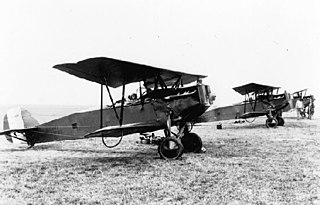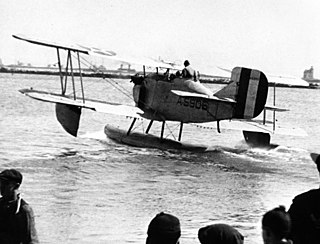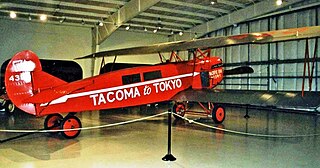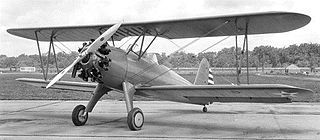Operators

| TA-1 | |
|---|---|
| Role | Biplane trainer |
| Manufacturer | Elias |
| Primary user | United States Army Air Service |
| Number built | 3 |
The Elias TA-1 was a 1920s American biplane training aircraft built by Elias. Only three aircraft were built for evaluation by the United States Army Air Service.
The TA-1 (a United States military designation Trainer, Aircooled No. 1) was designed to meet a United States Army requirement for a training aircraft for the air service. The TA-1 was a conventional two-seat biplane. Three were built, two with a Lawrance R-1 engine and another with an ABC Wasp, the last two under McCook field project numbers Elias P-178 and Elias P-179. The aircraft performance was inferior to the other aircraft under evaluation (the Dayton-Wright TA-3) and no orders were placed or further aircraft built.
Data from The Illustrated Encyclopedia of Aircraft (Part Work 1982-1985), 1985, Orbis Publishing, Page 1599
General characteristics
Performance

The Consolidated PT-1 Trusty was a biplane primary trainer used by the United States Army Air Service (USAAS).

The Huff-Daland Type XV Training Water-Cooled TW-5 was a biplane trainer designed by the Huff-Daland Aero Corporation in the early 1920s for the United States Army Air Service.

The Berliner-Joyce P-16 was a 1930s United States two-seat fighter aircraft produced by Berliner-Joyce Aircraft Corporation.

The Stinson Voyager was a 1940s American light utility monoplane built by the Stinson Aircraft Company.

The Consolidated Model 21 was an American two-seat training aircraft built by the Consolidated Aircraft Company. It was used by the United States Army Air Corps with the designation PT-11 and the United States Coast Guard under the designation N4Y.

The Elias EM was a 1920s American general-purpose and marine expeditionary biplane built by Elias.

The Curtiss T-32 Condor II was a 1930s American biplane airliner and bomber aircraft built by the Curtiss Aeroplane and Motor Company. It was used by the United States Army Air Corps as an executive transport.

The Fleetwings BT-12 Sophomore, also known by the company designation Model 23, was a 1940s all-metal basic training monoplane built by Fleetwings for the United States Army Air Forces. Only 24 production examples of the type were built before the contract was cancelled.

The Keystone LB-6 and LB-7 were 1920s American light bombers, built by the Keystone Aircraft company for the United States Army Air Corps, called Panther by the company, but adoption of the name was rejected by the U.S. Army.

The Thomas-Morse O-19 was an American observation biplane built by the Thomas-Morse Aircraft Company for the United States Army Air Corps.

The Fokker D.XI was a 1920s Dutch single-seat fighter designed and built by Fokker

The Fokker C.IV was a 1920s Dutch two-seat reconnaissance aircraft designed and built by Fokker.

The Fokker F-14 was an American seven/nine passenger transport aircraft designed by Fokker and built by their Atlantic Aircraft factory in New Jersey.

The Farman F.50 was a French twin-engined night bomber designed and built by Farman as a replacement for the single-engined Voisin pusher biplanes in service with the French Air Force.

The Martin MB-1 was an American large biplane bomber designed and built by the Glenn L. Martin Company for the United States Army Air Service in 1918. It was the first purpose-built bomber produced by the United States.

The Sperry Messenger was an American single-seat biplane designed by Alfred V. Verville working for the Engineering Division of the United States Army Air Service (USAAS) and built under contract by Sperry Aircraft Company of Farmingdale, New York. The aircraft was later designated the M-1 and MAT by the USAAS. Sperry produced approximately 50 Messengers and the civilian two-seat version, the Sport Plane, between 1920 and 1926. The aircraft was the first to make contact between an airplane and an airship while in flight.

The Keystone NK or Keystone Pup was a two-seat biplane trainer built by Keystone Aircraft for the United States Navy.

The Koolhoven F.K.46 was a 1930s Dutch training biplane designed and built by Koolhoven.

The St. Louis YPT-15 was an American two-seat primary training biplane, built by the St. Louis Aircraft Corporation for use by the United States Army Air Corps. 13 examples of the type were acquired, serving in the late 1930s.

G Elias & Brother was and American manufacturer of cabinets and aircraft based in Buffalo, New York in the 1920s. A.G. Elias sat on the Manufacturers Aircraft Association's board of directors along with President Frank H. Russell, VP Glenn L. Martin, Charles L. Laurence, Chance M. Vought, S.S. Bradley, George P. Tidmarsh, and Donald Douglas. E.J Elias promoted the construction of a Buffalo municipal airport to aid the local fledgling airplane industry of five aviation companies constructing airplanes and airplane parts. From 1920-1925, Elias company's chief engineer, David Earle Dunlap (1896-1957), designed the Elias EM-2 Expeditionary planes. He designed the NBS-3 bomber fuselage and the Elias M-1 Mail plane. Dunlap's Elias TA-1 design was the first United States Army Air Corps Trainer to have a radial engine. After tests a McCook Field, the Army Air Corps selected other manufacturers over the Elias bomber and trainer. The company designed the Elias EM-1 to meet requirements for a multirole amphibian marine expeditionary aircraft. Elias delivered six production Elias EM-2 aircraft with Liberty engines to the United States Navy in 1922.
Related lists